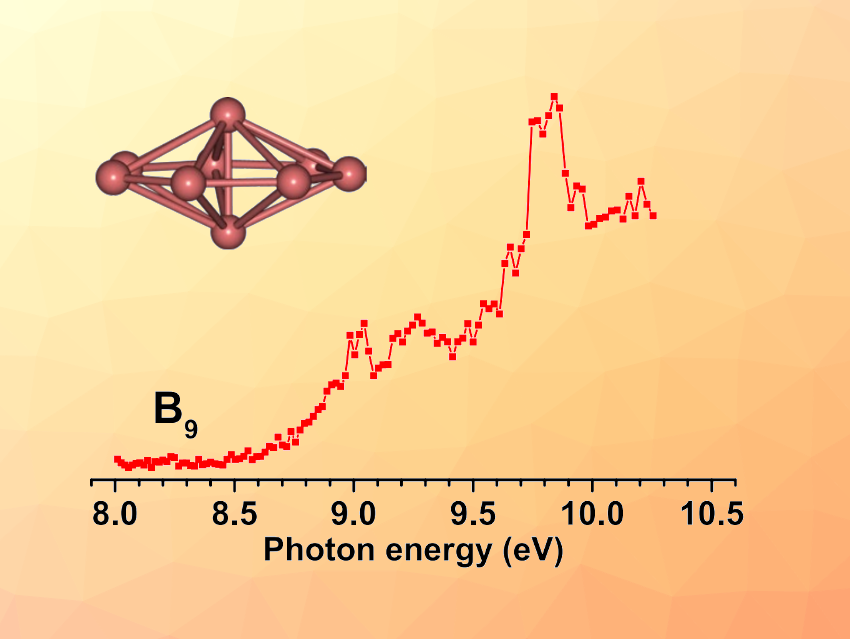Boron nanoclusters show structures and bonding situations that change with the cluster size. Ionic boron clusters can be studied using mass-spectrometry-based size selection and have been extensively investigated. The spectroscopic characterization of neutral boron clusters has been challenging in comparison. There is work on some planar or quasi-planar examples, but until now, it remained unclear what the smallest three-dimensional neutral boron cluster looks like.
Gang Li, Dalian Institute of Chemical Physics, Chinese Academy of Sciences, Jun Li, Southern University of Science and Technology, Shenzhen, China, Tsinghua University, Beijing, China, Ganjiang Innovation Academy, Chinese Academy of Science, Ganzhou, Ling Jiang, Dalian Institute of Chemical Physics, Hefei National Laboratory, China, Lai-Sheng Wang, Brown University, Providence, RI, USA, and colleagues have performed the first photoionization efficiency (PIE) spectroscopic study of a B9 cluster, which has a heptagonal bipyramid structure (pictured) and represents the smallest 3D neutral boron cluster found so far.
The team generated neutral boron clusters via the laser vaporization of an 11B enriched target and measured the PIE spectrum of B9 using a vacuum ultraviolet free-electron laser (VUV-FEL)-based cluster spectroscopic instrument. They then used quantum chemical calculations to understand and interpret the experimental spectral features.
The researchers found that the cluster features B−B bonding between the two capping atoms through the center of the B7 ring. It exhibits D7h symmetry. The cluster shows high stability due to delocalized σ and π bonding that result in “double” aromaticity. According to the team, the work advances the understanding of bonding in boron clusters.
- Observation of the Smallest Three‐Dimensional Neutral Boron Cluster,
Cong-Qiao Xu, Tiantong Wang, Chong Wang, Xin-Ran Dong, Huijun Zheng, Ya Zhao, Li-Li Pan, Jiayue Yang, Weiqing Zhang, Guorong Wu, Hua Xie, Gang Li, Jun Li, Ling Jiang, Xueming Yang, Lai-Sheng Wang,
Angew. Chem. Int. Ed. 2025.
https://doi.org/10.1002/anie.202419089



